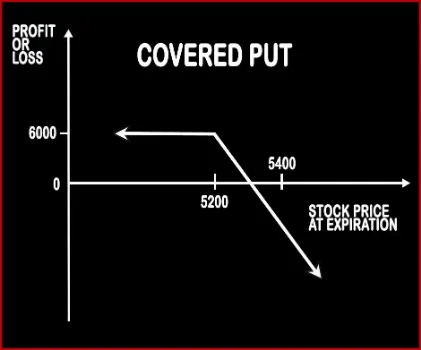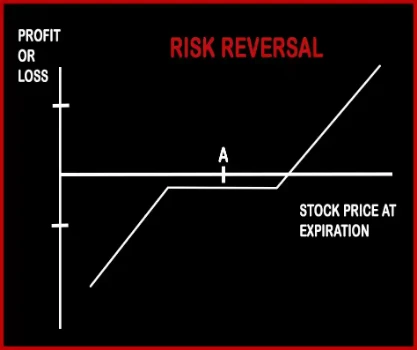Compare Strategies
| COVERED PUT | RISK REVERSAL | |
|---|---|---|

|

|
|
| About Strategy |
Covered Put Option StrategyThis strategy is exactly opposite to Covered Call Strategy. Here the investor is neutral or moderately bearish in nature and wants to take advantage of the price fall in the near future. The trader will short one lot of stock future. Now the trader will short ATM Put Option, the option strike price will be his exit price. If the prices rally above the strike price, the |
Risk Reversal Option StrategyThis strategy protects an investor from unfavourable price movements in the position but limits the profits can be made on that position. A risk reversal is a hedging strategy that protects a long or short position by using put and call options. In this one option is buying and other is written. In this strategy the trader has to pay a premium, while the written option prod .. |
COVERED PUT Vs RISK REVERSAL - Details
| COVERED PUT | RISK REVERSAL | |
|---|---|---|
| Market View | Bearish | Bullish |
| Type (CE/PE) | PE (Put Option) + Underlying | CE (Call Option) + PE (Put Option) |
| Number Of Positions | 2 | 2 |
| Strategy Level | Advance | Advance |
| Reward Profile | Limited | Unlimited |
| Risk Profile | Unlimited | Unlimited |
| Breakeven Point | Futures Price + Premium Received | Premium received - Put Strike Price |
COVERED PUT Vs RISK REVERSAL - When & How to use ?
| COVERED PUT | RISK REVERSAL | |
|---|---|---|
| Market View | Bearish | Bullish |
| When to use? | The Covered Put works well when the market is moderately Bearish. | This strategy can be used for hedging. When an investor want to protect long or short position by using a call and put option. |
| Action | Sell Underlying Sell OTM Put Option | This strategy work when an investor want to hedge their position by buying a put option and selling a call option. |
| Breakeven Point | Futures Price + Premium Received | Premium received - Put Strike Price |
COVERED PUT Vs RISK REVERSAL - Risk & Reward
| COVERED PUT | RISK REVERSAL | |
|---|---|---|
| Maximum Profit Scenario | The profit happens when the price of the underlying moves above strike price of Short Put. | You have unlimited profit potential to the upside. |
| Maximum Loss Scenario | Price of Underlying - Sale Price of Underlying - Premium Received | You have nearly unlimited downside risk as well because you are short the put |
| Risk | Unlimited | Unlimited |
| Reward | Limited | Unlimited |
COVERED PUT Vs RISK REVERSAL - Strategy Pros & Cons
| COVERED PUT | RISK REVERSAL | |
|---|---|---|
| Similar Strategies | Bear Put Spread, Bear Call Spread | - |
| Disadvantage | • Limited profit, unlimited risk. • Trader should have enough experience before using this strategy. | Unlimited Risk. |
| Advantages | • Investors can book profit when underlying stock price drop, move sideways or rises by a small amount. • Able to generate monthly income. • Able to generate profit from fall in prices or mild increase in the prices. | Unlimited profit. |